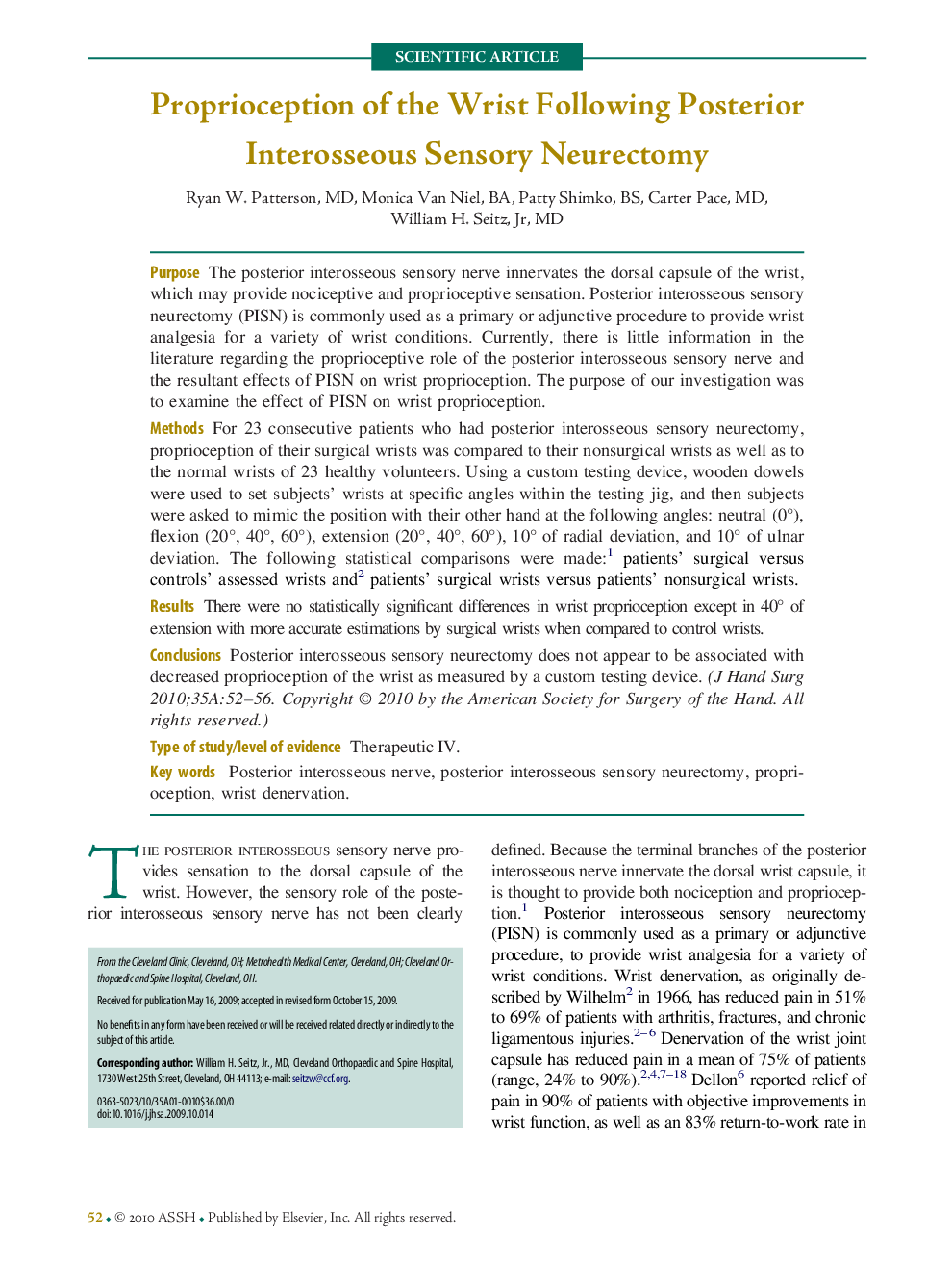| Article ID | Journal | Published Year | Pages | File Type |
|---|---|---|---|---|
| 4068011 | The Journal of Hand Surgery | 2010 | 5 Pages |
PurposeThe posterior interosseous sensory nerve innervates the dorsal capsule of the wrist, which may provide nociceptive and proprioceptive sensation. Posterior interosseous sensory neurectomy (PISN) is commonly used as a primary or adjunctive procedure to provide wrist analgesia for a variety of wrist conditions. Currently, there is little information in the literature regarding the proprioceptive role of the posterior interosseous sensory nerve and the resultant effects of PISN on wrist proprioception. The purpose of our investigation was to examine the effect of PISN on wrist proprioception.MethodsFor 23 consecutive patients who had posterior interosseous sensory neurectomy, proprioception of their surgical wrists was compared to their nonsurgical wrists as well as to the normal wrists of 23 healthy volunteers. Using a custom testing device, wooden dowels were used to set subjects' wrists at specific angles within the testing jig, and then subjects were asked to mimic the position with their other hand at the following angles: neutral (0°), flexion (20°, 40°, 60°), extension (20°, 40°, 60°), 10° of radial deviation, and 10° of ulnar deviation. The following statistical comparisons were made:1 patients' surgical versus controls' assessed wrists and2 patients' surgical wrists versus patients' nonsurgical wrists.ResultsThere were no statistically significant differences in wrist proprioception except in 40° of extension with more accurate estimations by surgical wrists when compared to control wrists.ConclusionsPosterior interosseous sensory neurectomy does not appear to be associated with decreased proprioception of the wrist as measured by a custom testing device.Type of study/level of evidenceTherapeutic IV.
